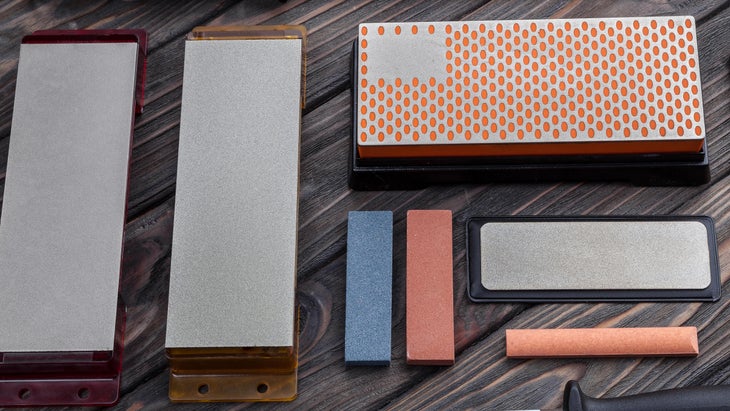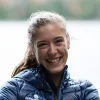Heading out the door? Read this article on the new Outside+ app available now on iOS devices for members! Download the app.
In the backcountry, your knife is your best friend. From gear repairs to peanut butter spreading, you never know when your blade will save your hike. But keeping your knife or multitool functioning like the day you got it takes work. A well maintained blade handles cutting better than a dull one, and keeps you safer by promoting better slicing and chopping technique—if your knife isn’t sharp enough, you’ll end up using more force to cut, which increases the risk of the blade slipping and ending up somewhere it should, like in your hand.
You don’t need a lot of supplies or fancy equipment to sharpen a knife: A cheap stone and some patience is all it takes. Follow these tips to maintain your tools so you can slice and saw for years to come.
Keep Your Knife Clean
Before you work on sharpening your knife, you’ll want to make sure it shines. After all, no one wants pepperoni morsels rotting in the crevices of their Leatherman. Give your multitool a bath in soapy water after every trip. Open every attachment and dry will with a towel to keep everything shiny and functioning properly. If you have a folding knife (as most backpackers will) it’s worth the effort to occasionally disassemble it for a deep cleaning, if the design allows. Some companies, like Kershaw, sell tools to help you do just that.
Keep Your Knife Lubricated.
The backcountry is rough on backpackers’ equipment, and that includes knives. If the hinges on your tool feel slow or stuck, clean and oil the joints. For best results, pick a food-grade mineral oil, which won’t attract dust and will let you safely use your knife for food prep if you so desire.

How to Sharpen a Knife
Sharpening your own knife can be intimidating, but the good news is that with enough practice, anyone can master it. Follow these tips to keep your blade sharp and in good condition:
Invest in a sharpening stone
There are numerous varieties of knife sharpeners. It’s best to research which is recommended for your particular knife, but here’s a rundown of the most common types:
- Water stones allow you to produce a very sharp edge in a short amount of time, and are great for reviving especially dull or damaged knives. These should always be wet when used, and require some time and skill.
- Oil stones take slightly longer than water stones and require oil for sharpening, but they’re often affordable and effective at sharpening well.
- Diamond stones and plates are long lasting and simple to use, but can be less forgiving than whetstones since they remove more material at once from the knife blade at once. This also means they sharpen fast.
- Other options like pull-through sharpeners, rods, and others are out widely available. These are variable in terms of price and effectiveness—we’ll focus on whetstone sharpening for achieving best results.
Whetstones come with a range of coarse to fine surfaces. Coarse stones are best for very dull blades, and finer stones allow you to hone in on a razor-sharp edge. If you’re serious about knife care, invest in a few different stones, as each serves a different purpose.
Master your sharpening technique
If you’re using a stone that requires water or oil, start by wetting it according to its instructions. Then, follow these steps:
- Lay the knife flat on the stone, then tilt until the edge, or bevel, is flush against the sharpening surface.
- Keeping the bevel flat against stone, push the knife across the stone away from you 8 to 10 times (or until you feel material buildup—a burr—along the edge). Apply light pressure, as though making a thin slice, angling the blade as needed to get the whole length of the edge.
- Turn the knife over and repeat, this time pulling the blade toward you. The burr will switch sides. Make sure to apply the same number of strokes on each edge.
- To remove the burr and complete sharpening, alternate one stroke on each side of the blade until you have an even edge. You may switch to a finer stone at this point for extra sharpness.
Do your research
Some knives require special care or sharpening techniques. Read your owners manual or instructions on the manufacturer’s website for care tips specific to your knife or multitool.
From 2024
